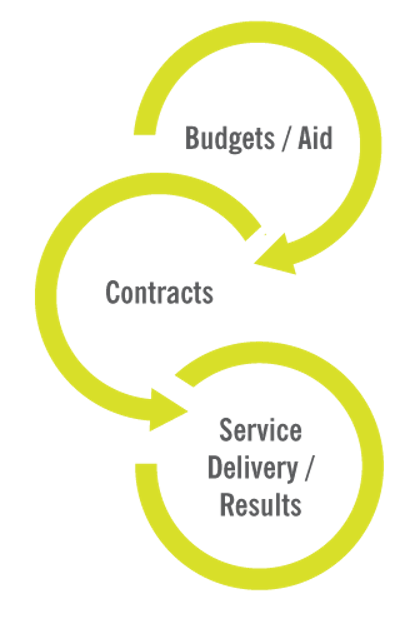Open Contracting Data and International Aid Transparency: the Potential for Complementarity

These days, everyone is talking about open data. To ensure that the open contracting data standard is not just another voice in the crowd, but actually a meaningful contribution to the field, we’ve been asking some tough questions: How can open contracting data help improve the transparency of international aid flows? And, how can open contracting data help link aid data with service delivery and results?
Data becomes meaningful when it can be combined with other data
Development agencies and aid recipients around the world are currently using the IATI data standard to publish aid spending data to the level of project activities. Contract level data would complement IATI data by adding an additional layer of detail to the picture. This complementarity can be furthered through the newly announced initiative to establish an Open Contracting Data Standard, which would enable users to join up aid data, budget data, and contracting data to get a clearer picture of service delivery outcomes and results.
In January 2014, the Open Contracting Partnership and the Web Foundation explored these issues in Montreal, Canada while participating in the Technical Advisory Group meeting of the International Aid Transparency Initiative (IATI) and the Canada-hosted Open Data for Development Challenge.
The Challenge
In order to achieve the goal of complementary, there are a number of challenges to overcome, particularly the need for common identifiers and the need for interoperability among systems.
The issue of common identifiers refers to the need to standardize the way the data is entered within a particular data field. This is particularly challenging with regard to government agencies (as there is currently no standardized way to describe them). In order to meaningfully compare budget data with aid data and procurement data, for example, either within a country or across countries, it is important to know whether the things we would seek to compare are, in fact, comparable. Two examples of non-standardized data are below.
Figure: The Need for Common Identifiers: 2 Examples

A related challenge involves the fact that contracting data, budget data, and aid data are currently held in different systems. A government agency’s contracting data will typically be held in two types of systems: procurement and financial management. In the development assistance context, the sought contracting data could be found in the country agency’s systems, the donor agency’s systems, and sometimes project specific systems. Ensuring that the data from these systems is accessible and interoperable will be important to “complete the picture” of tracing aid and budget data to its results and impact.
Implications for the Open Contracting Data Standard
With these challenges posed, the Open Contracting Partnership, with Web Foundation, held a stakeholder workshop to build a technical roadmap for the development of an Open Contracting Data Standard on January 31, 2014. The workshop generated several detailed use cases for the open contracting data standard work as well as concrete feedback regarding: the future governance of the standard, dealing with organizational identifiers, mapping open contracting stakeholders, and scoping related standards.
The Way Forward
Over the course of the next year, the objective of the Open Contracting Data Standard team will be to work with data publishers and data users to build a flexible, modular, and adaptable standard that is able to meet their needs and to help them overcome the above challenges.
More information about this effort, including how to get involved, can be found here: http://open-contracting.github.io.